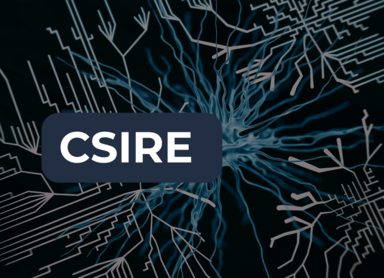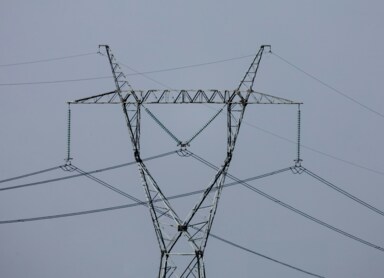DSR - combining security with optimization in the world of energy
In an era of rising energy prices and visions of depletion of natural resources in the foreseeable future, energy flexibility at the individual enterprise level is becoming increasingly important. One of the solutions used in practice is the Demand Side Response service. How does the DSR service work and what does it consist of? What does your company gain from it?
In an era of rising energy prices and visions of depletion of natural resources in the foreseeable future, energy flexibility at the individual enterprise level is becoming increasingly important. One of the solutions used in practice is the Demand Side Response service. How does the DSR service work and what does it consist of? What does your company gain from it?
DSR - what is it and how does it work?
The DSR service consists in reducing the demand for electricity or postponing it by the end user in response to changes in energy prices or at the direction of the transmission system operator1. Distributed reduction services improve energy security and increase the reliability of the distribution system.
Demand Side Response services have been in use since the 1970s and serve to balance electricity supply and demand. Today, more and more residential customers are adopting DSR by implementing appropriate technological solutions in their businesses. DSR services are part of the Demand Side Management (DSM) philosophy, which refers to the overall concept of demand-side management of electricity demand.
Why is Demand Side Response so important? In situations of peak demand for electricity, the balance situation (the relationship between supply and demand for electricity) is particularly at risk. Electricity suppliers have various tools to balance this situation.
One of them is cold (so-called unloaded) reserve. It consists in keeping an unused device (e.g., a transformer) on standby, which is activated in situations of increased load or failure of other infrastructure components. Another solution is to run pumped storage power plants on an emergency basis.
Such a function can also be performed by DSR. The literature indicates that the effectiveness of this method has already been used in many countries, including the US, the Czech Republic and the UK.
DSR service can be used by companies regardless of the industry in which they operate. However, the more electricity you need for day-to-day operations, the greater the reduction you can declare and the more you will earn. A good example of how profitable power reduction can be is provided by Schumacher, which has its facilities in Myszków, Silesia. The corrugated board manufacturer could receive as much as half a million zlotys for staying in business.
Demand Side Response - key aspects and benefits
The benefits of Demand Side Response can be considered in two ways - from the point of view of the electricity supplier and the demand side, i.e. the end user of the electricity system. The supplier's gain lies primarily in:
- high efficiency of DSR, i.e. real relief of the demand side of the grid;
- flexibility consisting of the ability to reach for DSR when needed;
- predictability - the ability to calculate exactly how much demand-side response allows you to relieve the network.
And what does your company gain through DSR? First and foremost, the entrepreneur is compensated for its willingness to reduce power, the amount of which depends on the extent to which the grid can be relieved. With one megawatt of difference, the compensation can reach up to several hundred thousand zlotys per year.
The company can also count on image benefits. Agreeing to use DSR makes it possible to receive the “I support Poland's energy security” certificate from the company Polskie Sieci Elektroenergetyczne (PSA). It proves that the company is actively involved in maintaining the country's energy security.
By implementing DSR you can more easily meet the requirements of multi-criteria LEED and BREEAM certifications. These are internationally recognized standards for infrastructure design. Receiving them indicates that you have adopted sustainable building criteria.
Finally, the decision to use a DSR service saves money and reduces expenses, provided that you foresee appropriate technological solutions at the stage of creating the business model.
DSR services in the energy industry - do you have to be afraid of them?
When considering the use of DSR, many entrepreneurs withdraw from such a project for fear of losing control over the company's electricity supply. After all, without electricity virtually no business can function, right?
By all means, but it's also important that the Polish Power Grid cannot use DSR arbitrarily. When deciding on DSR, you don't have to worry that you will suddenly be cut off from the ability to fulfill orders. First of all, PSE S.A. can send a power curtailment order no more often than once a quarter. Often it turns out that companies stay on standby for DSR for years, but since energy security is not affected, they do not provide this service at all.
In addition, the instruction must be given at least 7 hours in advance and only within the specified time window (from 10 pm to 7 am). If you do not receive an instruction from the PSE during these hours, it will not be sent at all on a given day.
Many companies also don't realize that they are paid for remaining on standby for DSR, not the actual reduction. So if you don't receive a call from PSE during the year, the money will still be paid.
Of course, you may wonder what will happen if you declare that your company is ready to reduce its electricity demand by 1 MW, but after receiving the order you don't do it. Well...nothing will happen. DSR procedures do not provide for any sanctions for program participants other than the one that they will not receive part or all of the agreed remuneration if they fail to comply.
DSR in practice - steps and strategies
One can write at length about the DSR service, but what does transitional electricity demand reduction really entail?
One of the simplest solutions is to invest funds in renewable energy sources, such as hybrid photovoltaics with energy storage. It guarantees energy independence and the ability to produce electricity when you can't get it from the power grid. This means that you don't have to use less electricity at all. You simply temporarily use the reserves stored in the energy stores, rather than drawing power from the DSO grid.
Another way is to sign a PPA for the supply of electricity from an entity that obtains it from fully renewable sources, such as photovoltaic farms or wind farms. Through the Reo.pl platform, you can sign both cPPAs and vPPAs.
Great opportunities for optimizing electricity consumption are offered by systems like BEMS (Building Energy Management System). Through them you can control the operation of HVAC systems, heat pumps and other equipment that requires electricity to operate - refrigerators, compressors, computers, lighting.
Companies can also temporarily reschedule work or switch machines to economy mode.
The company can choose any strategy to deal with DSR, the PSE company does not impose any requirements in this regard. Using the DSR service brings a whole range of benefits for your company and no risks. You can spend the money you receive in exchange for your cooperation with PSE for any purpose, including expanding your company's infrastructure. So why not take care of the environment, since by signing a contract with PSE, you are establishing a win-win relationship?
1. Bućko P. i in; Realizacja usługi DSR na przykładzie domów jednorodzinnych; Rynek Energii; Nr 2 (147) 2020






